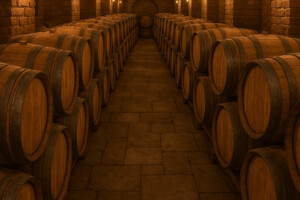
From the vineyards beaten by the wind of Pantelleria to those that climb the terraces of the Cinque Terre in Liguria, Valtellina in Lombardy, on the marogne, the dry-stone walls that characterize territories such as Soave or Valpolicella, but also those that climb inaccessible ridges such as those of the Prosecco Hills of Conegliano Valdobbiadene UNESCO World Heritage Site, with steep slopes, or that cling to volcanic soil, such as Etna, the Euganean Hills and beyond: There are many tales of “heroic viticulture” that the Belpaese can offer, as well as those of historical viticulture, where the vineyards, for decades if not centuries, characterize the landscape, from Langhe to Montalcino, from Collio to Irpinia, just to name a few of the many examples. And now, finally, the heroic vineyards and historic vineyards of Italy, already recognized by the Testo Unico del Vino, have a real operational legal protection, thanks to the decree signed by the Minister of Agriculture Teresa Bellanova, together with that of Cultural Heritage and Tourism Dario Franceschini, and that of the Environment, Sergio Costa. This is to underline that these vineyards are very ancient agriculture and often vital for their territories, but also a demonstration of a centuries-old culture that cannot be lost, and with a role of protection and maintenance of the environment and the precious landscape. A long-awaited decree which, as Teresa Bellanova explains, “finally makes the long-awaited path concrete so that the interested parties can submit applications for the recognition of historical or heroic vineyards to the competent Regions. As the decree indicates, vineyards are defined as heroic if they “fall in areas subject to hydrogeological risk, or located in areas where orographic conditions create obstacles to mechanization, in areas of particular landscape and environmental value, as well as vineyards located on small islands”. On the other hand, “those vineyards whose presence, reported in a given area/particle, is prior to 1960” are considered historical. Vineyards whose cultivation is characterised by the use of traditional practices and techniques “linked to local physical and climatic environments, which show strong links with social and economic systems””. In the five articles the standard, alongside the definition, addresses and defines the criteria for the identification of historical and heroic vineyards, and those for the definition of the types of interventions. For example, with the exception of areas already identified by regional landscape plans, heroic vineyards must have at least one requirement between: slope of the land over 30%; average altitude over 500 meters above sea level, excluding those located on a plateau; planting on terraces and steps; viticulture of small islands. For the historical vineyards, are identified either by the use of traditional forms of cultivation linked to the place of production, or by the presence of “historical hydraulic-agricultural systems of particular landscape value”. Vineyards of landscapes entered in the National Register of Rural Landscapes of Historical Interest are also considered historical, provided that viticulture represents the reason for their entry and the vineyard represents the main reason for their inclusion; those that belong to territories that have obtained recognition of exceptional universal value by Unesco and the criterion for entry in the list is due exclusively or in a complementary way to viticulture; those that fall within areas protected by regional laws or identified by landscape plans for the protection of specific wine-growing territories. “From today we can finally count on a law that identifies, supports and enhances these particular and delicate categories of vineyards and therefore the winemakers and all those who consider it a heritage of extraordinary importance from the historical, environmental, productive, cultural, economic point of view, work to protect it, preserve it, hand it over to the younger generations”, says Minister Teresa Bellanova. “These lovers of our environmental heritage, these producers will also be able to count on specific resources and put in place interventions aimed at enhancing and promoting the production of heroic or historical viticulture also through the use of a national brand, which we will define with a subsequent measure.
Above all, also with this decree we reaffirm the importance and excellence of a sector that represents an extraordinary heritage of biodiversity and that, over the centuries, has built and characterized the Italian landscape in a very evident way. We want to support these knowledge and skills with determination, giving these winemakers our thanks for their daily work and effort to defend their vineyards and a history that is the heritage of all”.
Copyright © 2000/2025
Contatti: info@winenews.it
Seguici anche su Twitter: @WineNewsIt
Seguici anche su Facebook: @winenewsit
Questo articolo è tratto dall'archivio di WineNews - Tutti i diritti riservati - Copyright © 2000/2025